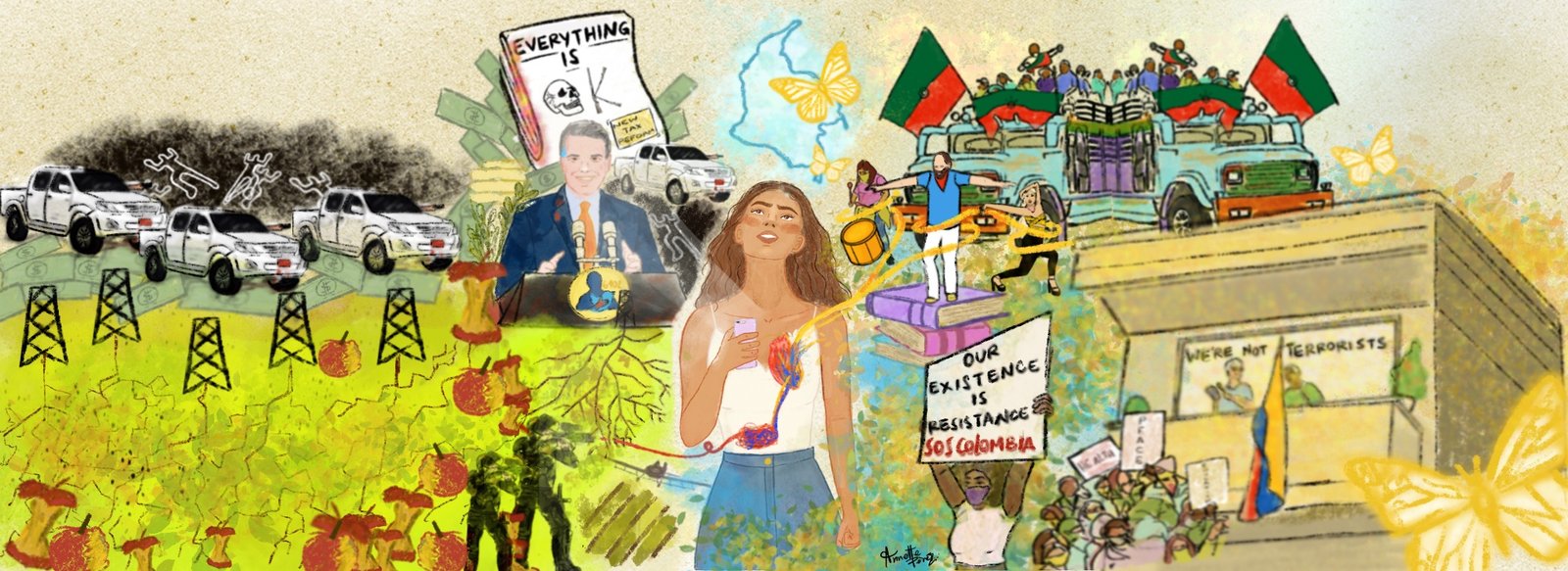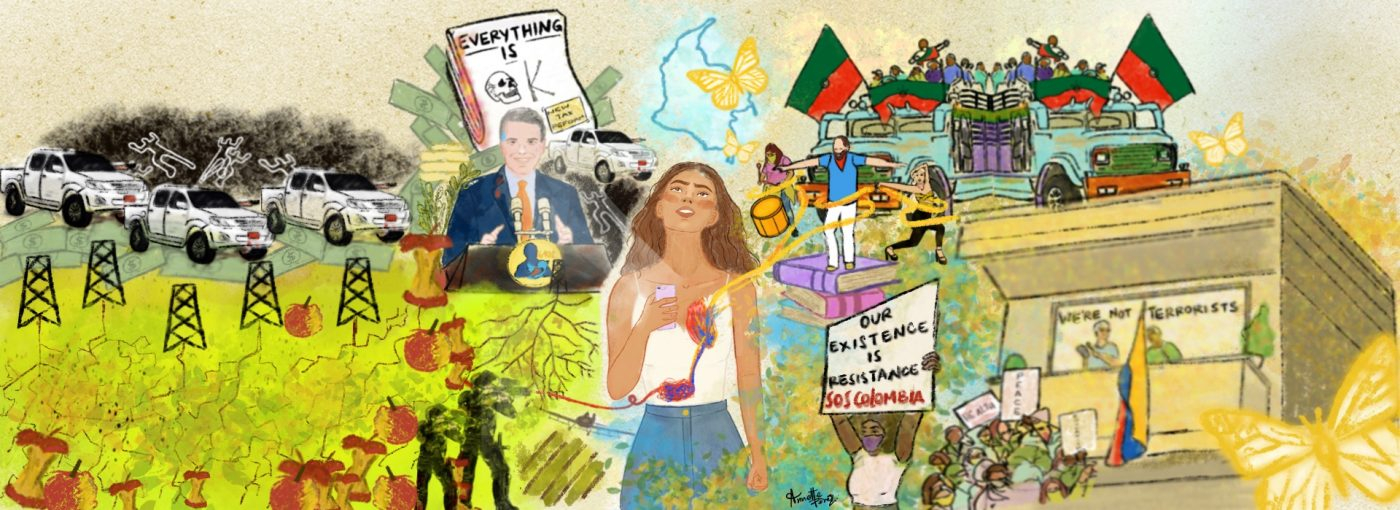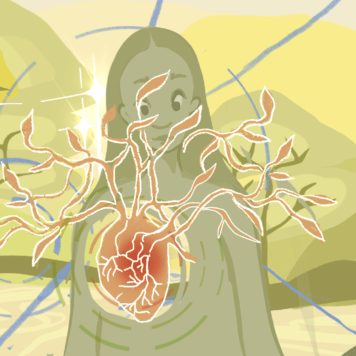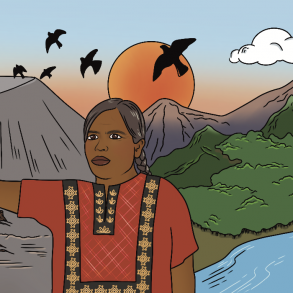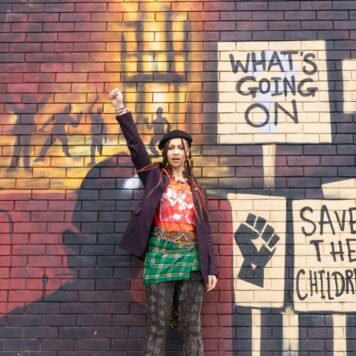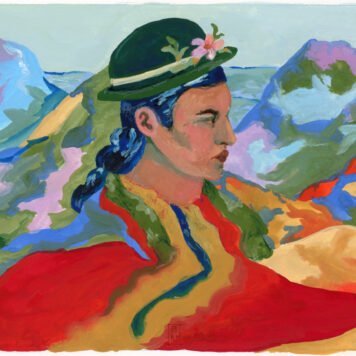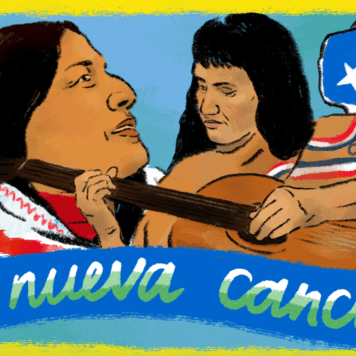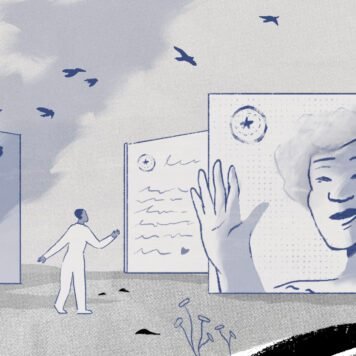“El viento eleva nuestras voces
quizá el cambio acaba de llegar”
(The wind raises our voices
perhaps change has just arrived)
Jorge Garzón
During the last few weeks, almost everyone in Colombia has been gripped by feelings of fear, anger, and frustration. All feeling as though we are not able to do enough or express ourselves sufficiently. Where there is hope, it has been tentative. Is change near? Or will this too pass into history as a failed attempt at resistance?
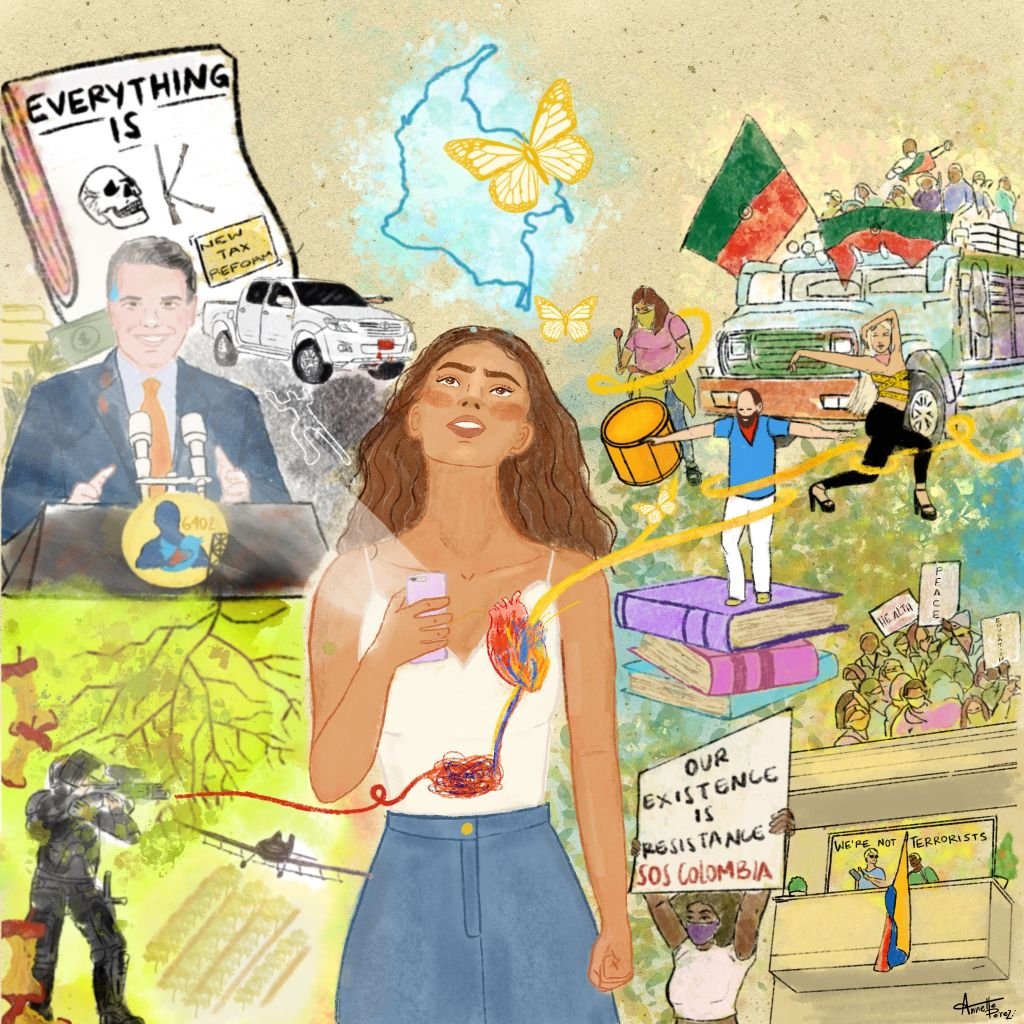
It’s important to understand why this action is happening now. Certainly, Colombia has faced its share of complex political problems throughout its history. However, when the President of Colombia and the Minister of Finance announced new tax increases in order to ‘stabilise its economy’ after COVID-19 , Colombia decided that enough was enough. Ignoring the government’s warnings and isolation measures people went out into the streets to actively participate in a national strike. On 28th of April, thousands of Colombians from different sectors came together in protest. However our anger was fuelled by more than just the recent reform, which has now been revoked, but also by the violence, poverty and the growing inequalities which are plaguing our country.
The strike has been met with severe police brutality with many cases of human rights violations being reported across the country. At the time of writing, the figures are as follows:
2110 cases of police brutality
362 victims of physical violence by the police
30 victims of homicides allegedly committed by the police
1055 arbitrary arrests
442 violent interventions by the public force
20 victims with injuries to their eyes
133 cases of firearm shootings by the police
16 victims of sexual assault by the police
However, the numbers are increasing every day.
Subscribe to shado's weekly newsletter
Exclusive event news, job and creative opportunities, first access to tickets and – just in case you missed them – our picks of the week, from inside shado and out.

This situation has disproportionately affected Colombia’s youth. As a young person myself, I’ve been conflicted about what I can do. Sometimes I feel useless and disempowered. I have often found myself scrolling at 2am on Instagram, overwhelmed by the number of videos which show how other young people and civilians’ human rights are being violated.
And it would seem that I’m not alone. I’ve been asking other young people to tell me the words that come to their minds when they think about the strike. A word that I heard a lot was impotence: the “inability to take effective action; helplessness.”. It was this feeling which spurred María Fernanda Alarcón, a 20 year old university student from Bogotá, to go out and strike: “I’ve been feeling as though I’m impotent in the face of what has been going on”, she says, “That’s why I decided to exercise a symbolic and political act in the streets”.
For many, striking seems the only possible means for people to take action and to feel like they are doing something valuable. Some are frustrated because of this, as Sofía Aguilar, a 21 year old student based in Bogotá, said: “As a person who cannot go out to strike for personal reasons, I feel as though I’m not doing enough, although I know that there are things I can do from inside my home which can help support the action in the streets.” This dilemma is on the minds of many Colombians: what’s more dangerous, COVID-19 or the current actions of our government?
And yes, sometimes striking seems to be the only way of feeling heard. But Colombia’s youth are also experiencing fear: “an unpleasant emotion caused by the threat of danger, pain, or harm”. This is particularly driven by police brutality and the fear of what might happen to them if they go out. Nathalia, a student from Cali, has been out to strike a couple of times. While these particular protests were peaceful, she still feared for her life. Currently, Cali is a city marked by police brutality and violence from armed civilians. She describes visiting two resistance spots, Sameco and El Paso del Comercio to bring supplies. “It was like a war zone,” she said, “it makes you want to sit down and cry. The fear of not coming back home has increased, everyone fears for their lives and the lives of their loved ones”. However, she continues: “Going out during this period has been complicated, but these feelings of fear and insecurity have been felt across Colombia from before the most recent wave of protests”.
This is something Hanna Briceño – a student living in Pereira – agrees with. Although she hasn’t been striking herself, she knows people who do, and has tried to ensure they come back safe. One friend told her: “we haven’t even been striking for a month and there’s already been tons of deaths… who knows if I’m going to come back or not?”. Hanna explains: We all fear for our loved ones when they decide to go out. We have always been scared of the people who are supposed to protect us.”
However, these feelings are also mixed with the sensation of Hope: “a feeling of expectation and desire for a particular thing to happen”. The youth feels that this is the moment for change, and the strikes finally seem to be going somewhere. However, María Fernanda makes it clear that sometimes the feeling of hope is also related to privilege: “You feel a lot of hope when you go out on the street but I don’t want to sugarcoat all this because there have been so many deaths. Being surrounded by so many young people gives the impression that we are in a changing generation… but I also recognise that to go out and strike in peace is a privilege, because in Palmira or Cali things have been terrible.”
Sofía has discovered alternative ways to support the cause. “Staying active in creative environments can combat this fear of not helping,” she says. “Share art, explore what you are passionate about and use that to process and protest against the situation in the country. The backbone of a country must be forged by art and we cannot underestimate its power to express the change we want to see.” At the end of our interview, María Fernanda ponders how she will feel in 20 years, looking back at what we are living through today. “I don’t know what Colombia will be like in the future, but I do know that we will be proud knowing that we did not stay silent; that at the very least we raised our voices in the face of injustice.”
What is happening in Colombia is, without a doubt, historic. Perhaps change will come and perhaps it won’t, but the most important thing is that we are doing something. Even if we feel fear, impotence or anger, hope is present. And with hope as my driver, I’m willing to speak up and build a country where people don’t have to strike for their human rights to be respected.
